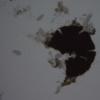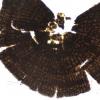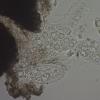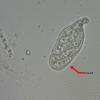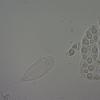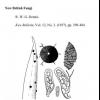
09-01-2026 17:41
Arnold BüschlenHallo, F. dilatata wird von vielen Bryoparasiten

10-01-2026 20:00
Tom SchrierHi all,We found picnidia on Protoparmeliopsis mur

07-01-2026 22:22
 Danny Newman
Danny Newman
Tatraea sp. on indet. hardwood The Swag, Great Sm

10-01-2026 01:18
 Danny Newman
Danny Newman
cf. Neovaginatispora fuckelii on indet. shrub Pre

07-01-2026 10:24
 Danny Newman
Danny Newman
Pezicula sp. on indet. hardwood Appalachian Highl

09-01-2026 10:08
 Blasco Rafael
Blasco Rafael
Hola, en el mismo habitat que la anteriorRetamaDia

08-01-2026 21:22
 Blasco Rafael
Blasco Rafael
Hola, He recogido esta muestra de Orbilia sobre Re

07-01-2026 17:29
 Marc Detollenaere
Marc Detollenaere
Dear Forum,On a barkless Populus I found some smal

10-11-2021 17:33
 Riet van Oosten
Riet van Oosten
Add-on topic http://www.ascofrance.com/forum/7059

07-01-2026 10:05
 Danny Newman
Danny Newman
cf. Chaetospermum on XylariaCosby Campground, Grea
 Dear forum,
Dear forum,On the leaves of Juniperus sp. I found some small black thyriothecia with a diameter of about 0.2-0.25mm. The scutellum was composed of quadrilateral cells radiately arranged. The cells were markedly longer than wide.Asci measured 53x22µ, 8-spored, bi- and triseriate.Spores measured 21.5x8µ , hyaline, 1-septate. Each cell of the spores contained a large guttule and several small ones.
Any help would be appreciated.
Marc
Seynesiella juniperi is misschien wel de oplossing?
Zie item Piet Bormans http://ascofrance.fr/forum/19328/seynesiella-juniperi
Groeten,
François
Hi Marc,
Seynesiella juniperi might be the solution?
See item Piet Bormans http://ascofrance.fr/forum/19328/seynesiella-juniperi
Greetings,
François

Bedankt voor de bijkomende info. Met die sleutel kom ik ook uit op Microthyriaceae.
Aan Seynesiella had ik niet gedacht omwille van de grote guttulen die niet vermeld worden in E&E en omdat ik in de sleutel van de Microthyriaceae gekozen had voor saprotrofe soorten met hyaliene sporen.Seynesiella wordt beschreven als parasiet met licht gekleurde sporen. In een vroegtijdig stadium blijken die echter wel hyalien te zijn.In Dennis ( dank voor de referentie ) staan de grote guttulen wel beschreven.
Alles wijst inderdaad op Seynesiella juniperi.
Marc
